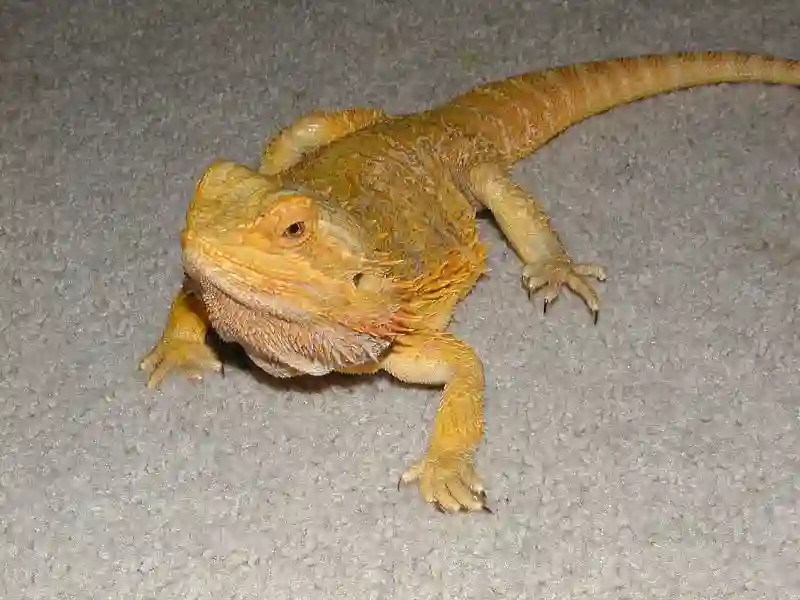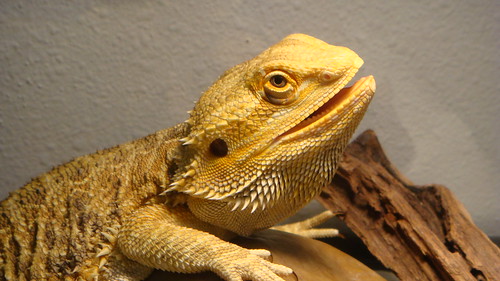Yes, it is possible to spay a female bearded dragon. Spaying refers to the removal of the female’s reproductive organs, while neutering refers to the removal of testicles in males.
However, spaying a bearded dragon is riskier than spaying a pet cat or dog, and even routine surgery can have complications such as infection and bleeding. Spaying a female bearded dragon may be recommended by a veterinarian to prevent or resolve a reproductive disorder.
Reproductive issues are common in female reptiles, and spaying is a potential remedy or prevention for some of them. It is important to note that spaying a bearded dragon should only be done if there is a medical situation or emergency in which doing so will help. If you don’t want to breed your bearded dragon, it is recommended to keep males and females separated to avoid unwanted breeding5.
Why Spay a Female Bearded Dragon?
Health Benefits for the Dragon
Spaying a female bearded dragon offers several health benefits. It eliminates the risk of ovarian and uterine cancer, which are common in unspayed females.
These types of cancer can be fatal if not diagnosed and treated early. Additionally, spaying can prevent or improve metabolic bone disease, which is caused by calcium deficiencies and can lead to deformities in the bones of the dragon’s legs, spine or jaw.
Preventing Unwanted Breeding
Another important reason to spay a female bearded dragon is to prevent unwanted breeding. If you have multiple dragons living together, there is a high likelihood they will mate if not separated or fixed in some way. Baby dragons require specific care that many owners are not equipped or interested in providing, making it vital to avoid unexpected litters.
Reducing Aggression and Territorial Behavior
Spaying also helps reduce aggression and territorial behavior in female bearded dragons as it eliminates their need to defend their territory from potential mates or other females who may encroach on their space. This can make them more relaxed around humans and other pets alike.
Many people assume that spaying is only necessary for cats and dogs, but it’s just as important for reptiles like the bearded dragon. By opting for this procedure, you can ensure your pet remains healthy while also avoiding unwanted breeding outcomes that could put both your pet and potential offspring at risk.
The Spaying Process
Pre-surgery Preparations
Before undergoing spaying, it is important to ensure your bearded dragon is healthy enough for the procedure. A thorough veterinary examination will include a review of your dragon’s medical history, diagnostic tests, and physical exam.
Your veterinarian may recommend blood tests to evaluate organ function and overall health. Any underlying medical conditions must be addressed before surgery.
Additionally, fasting your pet for 12-24 hours before surgery can help prevent complications during anesthesia. It is crucial to follow your veterinarian’s instructions about withhold food and water prior to the procedure.
Anesthesia and Surgery
Spaying a female bearded dragon requires general anesthesia. Your veterinarian may use inhaled or injectable anesthesia depending on the individual needs of your pet.
Once anesthetized, the surgery involves making an incision in the abdomen to access and remove the ovaries and uterus. This procedure can take up to 45 minutes depending on the skill of the surgeon and any complications that arise during surgery.
Once complete, stitches are used to close up incision sites. It is important to note that this type of procedure should only be performed by a licensed veterinarian with experience performing surgeries on reptiles.
Post-surgery Care
After spaying, it is important to provide proper post-surgical care for proper healing: – Keep your bearded dragon in a warm environment until fully recovered
- Monitor their incision sites for any swelling or discharge
- Ensure they eat properly as appetite usually decreases after surgery
- Administer medication as prescribed by veterinary professional Your vet will typically schedule follow-up visits after the procedure too ensure proper healing progress.
Risks and Considerations
As with any surgical procedure, there are some risks associated with spaying a female bearded dragon. While these risks are relatively low, it is important to understand them before deciding whether or not to proceed with the procedure. One potential complication is bleeding during or after surgery.
The veterinarian will take steps to minimize the risk of this occurring, but it is still a possibility. Another risk is infection at the surgical site, which can be treated with antibiotics if caught early.
It’s also important to consider the age and overall health of your bearded dragon before scheduling a spay procedure. Younger dragons tend to recover more quickly than older ones, and those with pre-existing health issues may not be good candidates for surgery.
Potential Complications During Surgery
While spaying procedures for female bearded dragons are generally safe, there are some potential complications that can occur during surgery. One of the most common complications is damage to other organs during the procedure. This can happen if the vet accidentally cuts or punctures another part of the dragon’s anatomy.
Another possible complication is an adverse reaction to anesthesia. Before surgery begins, your veterinarian will perform a thorough evaluation of your dragon’s overall health and choose an appropriate anesthesia protocol based on their findings.
Cost of the Procedure
The cost of spaying a female bearded dragon can vary depending on several factors. Some veterinarians charge more than others for this type of procedure, so it’s important to do your research beforehand and compare prices.
Other factors that can impact cost include additional fees for pre-surgical exams or bloodwork, as well as any post-operative medications or follow-up appointments that may be necessary. On average, you can expect to spend anywhere from $200-$500 for a spay procedure on your bearded dragon.
Alternative Options for Preventing Breeding
If you decide that spaying your female bearded dragon is not the right choice for you, there are other options available for preventing unwanted breeding. One of the most common alternatives is to keep male and female dragons in separate enclosures.
This can be challenging if you have limited space, but it’s the safest way to prevent accidental breeding. Another option is to use a technique called “temporal separation,” where the male and female dragons are only housed together during specific times of year when breeding is desired.
You could consider getting a same-sex companion for your bearded dragon. While this won’t prevent them from laying eggs or going through reproductive cycles, it can help to reduce territorial behavior and aggression in some cases.
Conclusion
Summary of key points
Female bearded dragons can be spayed to prevent unwanted breeding, reduce aggression and territorial behavior, and improve overall health. The spaying process involves anesthesia and surgery followed by post-surgery care, and there is a potential for complications during the procedure. The cost of the procedure is also a consideration.
Final thoughts on spaying female bearded dragons
While spaying a female bearded dragon may not be necessary for all owners, it can greatly benefit both the dragon and their owner. It’s important to weigh the benefits against the risks and consider alternative options for preventing breeding before making a decision.
Overall, with proper care and attention during the spaying process, many female bearded dragons can enjoy improved health and behavior as a result of being spayed.



Leave a Reply